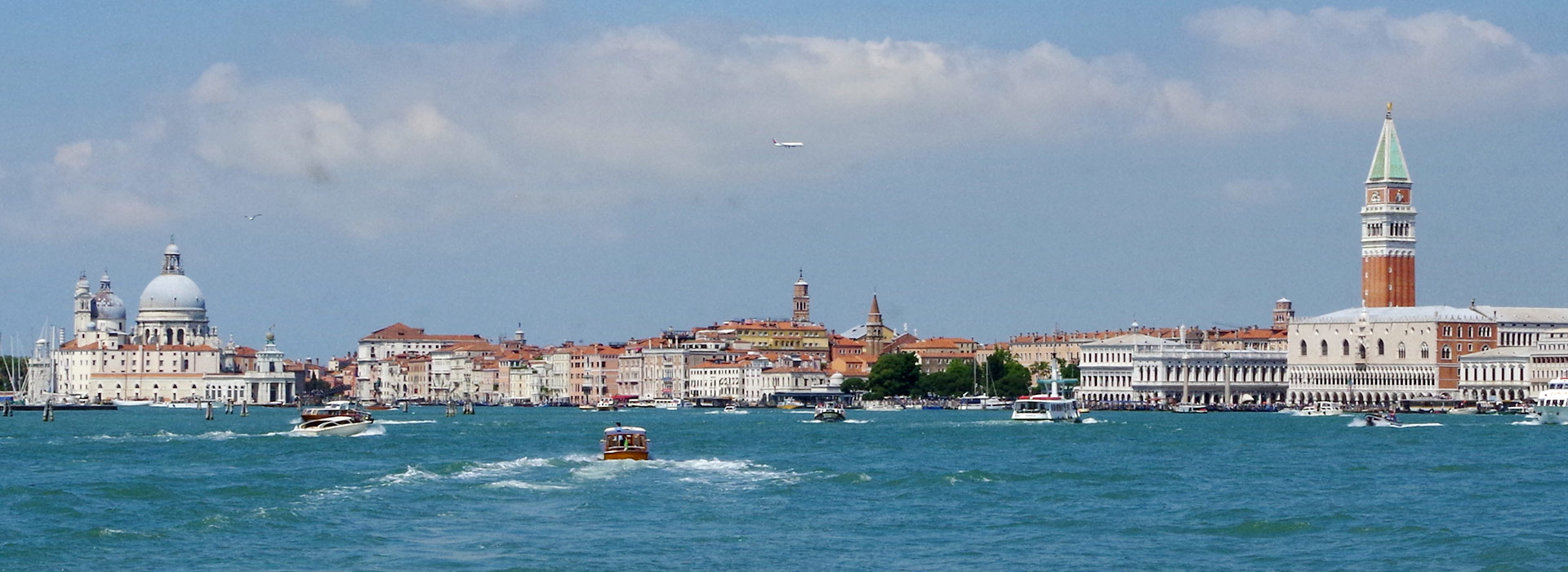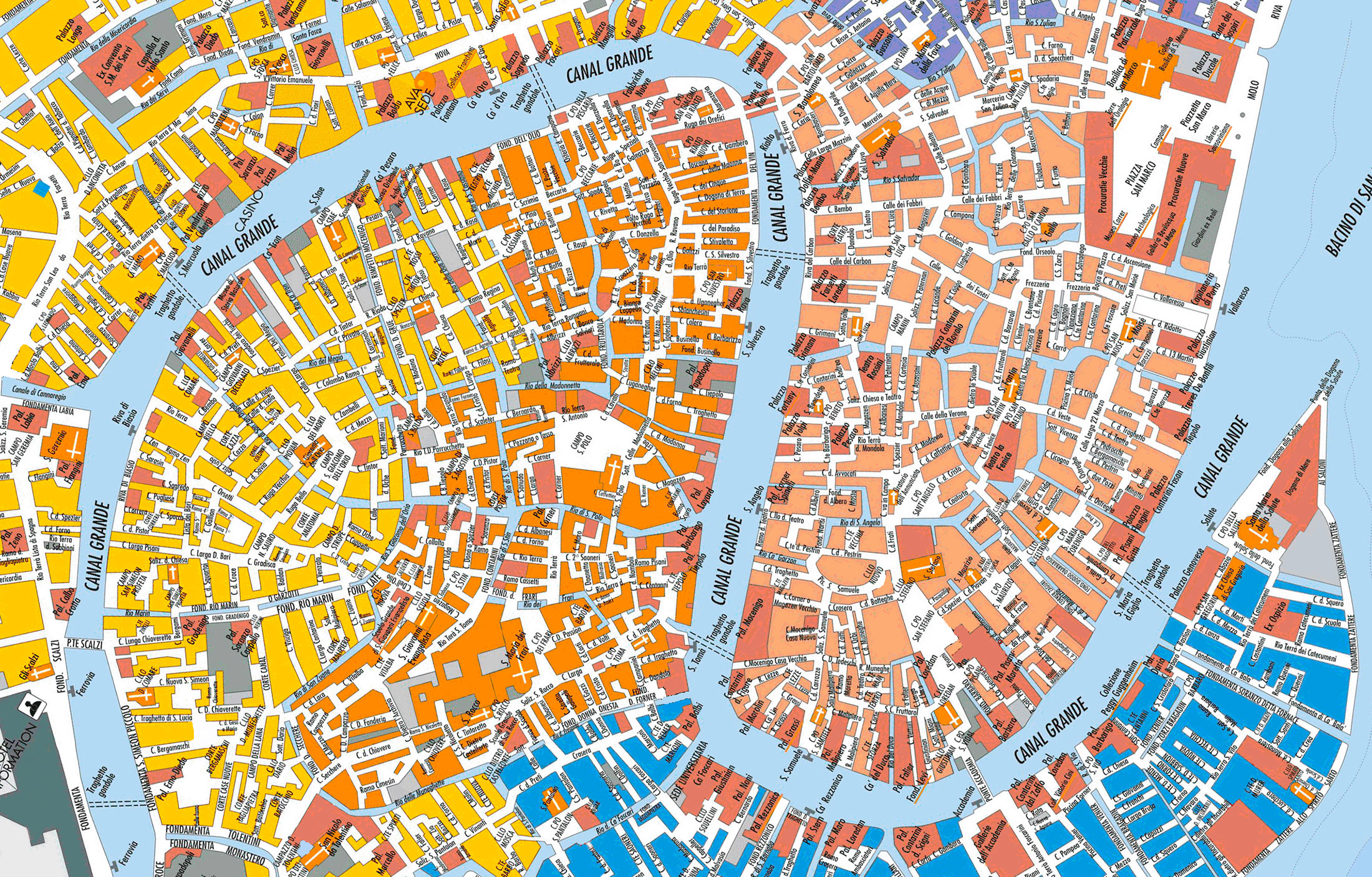The Grand Canal is the main channel of Venice. Along 3800 meters (width from 30 to 70 m, average depth of 5 m), divided into two parts the old town by drawing an "S" that goes from the Santa Lucia train station to the Punta della Dogana. Public transport is provided by vaporetti and water taxis, and many tourists ride the canal by gondola. It is flanked along the length by magnificent buildings of the centuries twelfth to eighteenth, which manifest the welfare and art created by the Republic of Venice, making it one of the symbols of the city. Every year the Venetians live on old traditions such as the Regata Storica of Venice.
The Grand Canal, which crosses the city in an inverted S shape and is navigable throughout its entire length, is the city's vital artery, its main street and its waterfront promenade all at once. In the past, merchant ships would arrive at the Rialto to unload their goods—spices, silk, jewelry, and furs—and the great Venetian families built their palaces along the canal. With a few exceptions, these palaces are simply called Ca', the typical Venetian abbreviation for House. An unwritten code of honor ensured that none of the buildings jutted too far into the canal or were overly ornate in their architectural appearance.
This centuries-old tradition is what has allowed the city to maintain a relatively unitary structure that has survived into the 20th century.
Along the Grand Canal, a unique panorama of Venetian architecture from the last five centuries unfolds.
One of the most evocative experiences of a visit to Venice is a stroll down the main street, whether in a Gondola, a private launch, or one of the vaporetti, the transport boats. Only in this way can one truly grasp the special atmosphere that arises from the communion of water, sky, and architecture. Until the 19th century, there was only one bridge spanning the Grand Canal at Rialto, but today there is the wooden Accademia Bridge and another, this one made of stone, at the station.
The lack of bridges was never a hindrance to the Venetians. In the past, most transportation was done by gondola or similarly structured boats. Canals were more important than land routes, which were generally used for travel within a community, which in turn was usually centered around a parish. Even today, there are invaluable substitutes for bridges: traghetti, gondoliers who will row you across the canal for a reasonable fee. Traghetti offer visitors an excellent opportunity to experience the true Venetian feel.
Canal Grande Pictures



